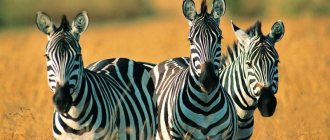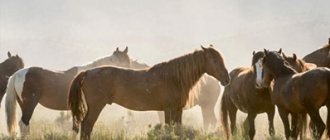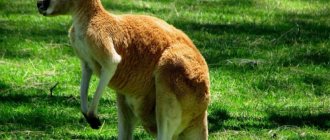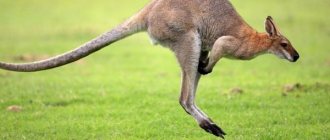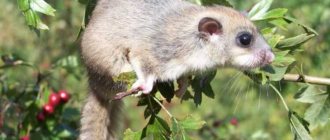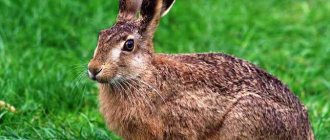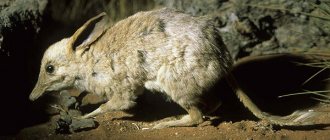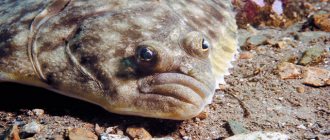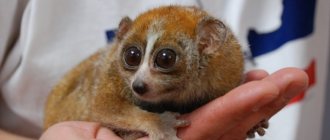Zebras are mammals from the equine family of the equine order. The first ancestors of animals appeared on the planet 4-4.5 million years ago. North America is considered the homeland of zebras, as well as their closest relatives horses and donkeys. About 2 million years ago, the predecessors of modern equine species settled in Eurasia, the Middle East, and Africa. The African line in biological taxonomy is represented by three modern species of zebras.
There are two versions of the appearance of the animal's name. According to one of them, the origin of the word is associated with the Latin phrase “wild horse”; according to another, it was borrowed from the language of the Angolan blacks.
Description and characteristics
Zebras lead a herd lifestyle. Herds consist of one male, several mares and their cubs of different ages. Sometimes zebras form large groups from several families or join herds of giraffes and antelopes.
In zebras, the care of adult animals for their growing offspring is clearly expressed: the dominant male and females protect the cubs during attacks by predators, often engaging in skirmishes with an opponent that is superior in strength.
Zebras use several types of sounds to communicate and exchange information in a herd. Depending on the situation, they can snort, growl, and utter sharp, abrupt cries, similar to the barking of a dog or the braying of a donkey.
What sounds does a zebra make?
Zebras can swim, and in case of danger they can reach speeds of up to 65 km/h.
What does it look like
The characteristic external features of zebras include the following:
| Body | Barrel-shaped, elongated. |
| Head | Proportional in size, with a relatively long neck, elongated muzzle, movable pointed ears. |
| Limbs | The hind legs are shorter than the front ones, the limbs end in a spade-shaped toe covered with a hard hoof. |
| Tail | Thin, long, with a tassel at the end. |
| Teeth | The jaws of zebras are adapted for eating grass: the front incisors are used to cut plants, and the lateral molars are used to chew them. Males have enlarged fangs, which are often used for defense during predator attacks. |
Zebras, like all equines, have a mane.
Origin of stripes
You can recognize a zebra among other equids by its characteristic striped color. The appearance of black and white stripes and their function is still an active subject of discussion among scientists. Currently, from the many versions, three main ones have been identified:
- The striped surface impairs the orientation of Tsetse flies, horseflies and other insects, as a result of which they do not have time to slow down in time before landing on the zebra's skin, hitting and bouncing off it. The theory is confirmed by the results of experiments during which striped blankets were put on horses, as well as the more intense striped color of zebras living in areas with a high concentration of insects.
- The color of white and black stripes may be one of the features of adaptation to the desert climate of Africa: during the heat of the day, white stripes reflect light, preventing the animal from overheating, and in the cold morning hours, areas covered with black wool absorb heat.
- The striped coloring confuses predators when assessing the size of a potential prey. This version is most susceptible to criticism by researchers.
Dimensions and weight
The height at the withers and weight of adult zebras depend on their variety. Savannah zebras are considered the smallest. Their maximum weight reaches 300-340 kg. Mountain zebras are slightly larger than savanna zebras, and the highest weight and height are observed in the desert species: 450 kg and 1.4 m, respectively.
A newborn foal weighs no more than 30 kg and is 75-80 cm tall.
How many years do they live
In nature, the average life expectancy of zebras is 25-30 years. Animals living in captivity live up to 35-40 years. An increase in the life cycle by 10-15 years is due to two reasons:
- Zebras often become prey to their natural enemies: cheetahs, lions, leopards, and hyenas. When attacking a herd, predators choose young animals or animals weakened by old age as victims.
- Despite the striped color that repels insects, zebras are still bitten by tsetse flies and horseflies, which not only drink blood, but also carry some life-threatening equine diseases (encephalitis, horse flu, African plague).
Reproduction and lifespan
There is no specific breeding season for these animals. A small stallion can be born at any time of the year. Most often this occurs during the wet rainy season, when there are no nutritional problems.
Pregnancy lasts 345-390 days. Mostly one baby is born from her. It weighs on average about 30 kg. Within an hour after birth, the foal can walk and jump freely on its own.
Breastfeeding lasts for a baby for more than a year, despite the fact that after a week he tries to nibble grass on his own. In 50% of cases, newborn zebras die from attacks by predatory animals in the form of hyenas, crocodiles, and lions.
Females produce offspring once every three years. At one and a half years old, animals have finally matured sexually and are ready for independent life. But the female is ready for the birth of a baby only after three years.
Reproductive abilities are preserved in zebras up to 18 years of age. Zebras live in the wild for 25 to 30 years. In captivity, their life expectancy increases slightly, and they live up to 40 years.
Types of zebras with names and photos
In the biological classification, there are 3 species and 4 subspecies of animals. Let's look at them in more detail.
Mountain zebra
Hartmann
has several isolated habitats located in the highlands of southwest Africa. The animals are distinguished by a more massive body, compact hooves and wide black stripes, which makes the color appear darker. A characteristic distinguishing feature is the dewlap at the bottom of the neck.
Mountain zebras are found at altitudes of up to 2000 meters; they are less sensitive to lack of moisture.
Cape
The mountain species includes two subspecies: Hartmann's mountain zebra and Cape zebra. Almost all mountain zebras live in nature reserves and national parks.
desert zebra
Grevy
Also known as Grevy's zebra. In appearance there is a significant resemblance to a donkey or mule. You can recognize a desert zebra by its more elongated skull, large rounded ears, massive neck and wide hooves. Features also include the absence of dark stripes on the stomach.
Grevy's zebra is found in the east of the African continent.
Savannah zebra
Chapman
Some sources also contain other names for the species: Burchell's zebra or steppe zebra. This is the most numerous and widespread species on the mainland.
The steppe zebra differs from its relatives in having shorter limbs, a convex forehead and the presence of so-called shadow stripes (light or dark brown stripes between black stripes).
One of the subspecies of Burchell's zebra is Chapman's zebra. This is a medium-sized animal, whose dark stripes are not black, but brown. Chapman's zebras live in large herds, the number of individuals in which can reach several thousand. They do not have clearly defined habitat areas and constantly move in search of food.
Quagga
Another subspecies is the quagga. This now extinct zebra lived in what is now the Republic of South Africa. Agricultural development and competition with livestock for food were the main reasons for the extinction of the subspecies in the late 19th century.
Of the three living zebra species, two are listed in the International Red Book with the status of “endangered species.” The main reasons for the decline in population numbers are the reduction of natural habitats due to human economic activity, restriction of food migrations, as well as uncontrolled hunting for meat and skins.
Lifestyle and habitat
Zebra is a wild animal of the African continent. In the north, the wild inhabitants of the green plains were exterminated in ancient times. Populations of desert and savannah zebra species persist in the eastern part of the continent in the steppe zones to the southern regions of the continent. Small numbers of mountain zebras live in high mountain areas.
Animal social connections are reflected in different ways. Animals sometimes gather in small herds of separate groups of 10 to 50 individuals. In the zebra family (male, 5-6 mares, foals) there is a strict hierarchy, the cubs are always under the fierce protection of adults.
Family groups can live separately, outside the herd. Among lowland animals there are associations of young males who have not yet acquired their own harems. They are expelled from the herd to live independently upon reaching 3 years of age. Lonely individuals who do not join their relatives often become victims of hyenas, leopards, lions, and tigers.
A peculiarity of zebra behavior is the ability to sleep standing up, huddled in a group for protection from predators. Several sentinels guard the peace of the family. If necessary, they give desperate resistance to enemies. The zebra's irreconcilable temperament at the moment of fight and endurance do not allow even a lion to cope with it.
When an enemy appears, the animals make barking sounds. Natural caution and timidity leaves little chance for predators to cope with a zebra. The prey is exclusively weakened individuals, physically fragile foals separated from the herd.
Zebra in the savannah unites well in herds with other inhabitants of Africa - gazelles, buffaloes, wildebeests, ostriches, giraffes, in order to together resist attacks from predators.
Attacks on striped horses most often occur during watering. The animal defends itself by actively kicking - a blow with a hoof can be fatal to the enemy. Zebra bites are very painful. When an animal rears up, its size visually increases, which has a terrifying effect on the enemy.
In observations of zebra behavior, scientists note in everyday life the animal’s predilection for bathing in mud in order to get rid of parasites. The bull woodpecker helps zebras to be clean, as it easily sits on the animal’s skin and picks out all the insects from the fur. The zebra, despite the bird's blows with its beak, does not drive away its orderly.
The mood of tamed animals is determined by ear movements:
- in the normal state - located straight;
- in aggressive – tilted back;
- in a moment of fright, they move forward.
Animals show dissatisfaction by snorting. Even domesticated individuals retain manifestations of their wild relatives.
Where live
The habitat of zebras is limited exclusively to the African continent. They are distributed in the southern half, and the habitat of each species has its own specific boundaries. Thus, the desert zebra is found in eastern Africa, and the savanna zebra is found in the south and southeast of the continent.
Where do they live?
Almost any habitat is suitable for zebras to live: savannas, lowland and mountain forests, semi-deserts.
ANTELOPE
White with black stripes or black with white?
The most amazing thing about the zebra is its coloring. Black and white stripes are the calling card not only of the entire species, but also of each zebra individually, because the stripes, like human fingerprints, are individual for each individual. This can be clearly seen in the photo, where there are two or three zebras. Zebra cubs recognize their mother this way - by stripes.
Look - Kangaroo - habitat, lifestyle, description and characteristics of the marsupial jumper (95 photos + video)
Scientists are still puzzling over why the zebra needs this coloring and how it appeared in the process of evolution. One of the most popular theories is that contrasting stripes confuse horseflies and tsetse flies, carriers of dangerous diseases. There is also a possibility that the stripes play a role in thermoregulation.
As for the eternal question: what color is a zebra, then, probably, this is a philosophical question from the series “Was it the chicken or the egg?” But now most experts believe that the main color is black.
What do they eat?
Zebras are herbivores. Unlike artiodactyls, which digest green matter in two stages, zebras have a simpler and less efficient digestive system. That is why, in order to obtain the required amount of nutrients, they are forced to spend most of their time searching for food and eating.
Zebras eat grass, young shoots of trees and shrubs, bark and roots of plants. They are able to digest tough food: a herd grazing on the plains eats taller and coarser cereal plants, which makes it easier for other herbivores to access the lush grass below.
Zebras constantly need water. Herds visit watering holes at least once a day. When the water level in rivers and lakes significantly decreases, animals dig holes up to 1 meter deep. These well-like depressions collect groundwater, providing the herd with the necessary amount of fluid.
During long droughts, zebra families gather in large herds and make long migrations, covering up to 500 km in search of pastures.
ELEPHANT
Enemies in the wild
The main dangerous enemy of the zebra is the African lion, which loves the meat of this animal and considers it a delicacy. Most often, the predator lies in wait for its prey on the way to a watering hole or looks for young individuals that have strayed from the herd.
A zebra can also become a victim:
- cheetah;
- leopard;
- hyenas;
- person.
In times of danger, a relative of the horse can reach speeds of up to 70 km/h, which does not always allow predators to feast on their tasty meat. The zebra can run very deftly in zigzags, confusing even very experienced hunters.
The zebra defends itself with powerful hooves, which it uses to hit the enemy with all its strength; sometimes such a blow can be fatal. The animal also bites very painfully.
Man can be considered the most terrible enemy for the animal, since many zebra breeds disappeared precisely because of his fault.
How do they reproduce?
Zebras become ready to mate at the age of 2-3 years, with females maturing earlier. The ability to reproduce in individuals of both sexes remains until 15-18 years. Pregnancy lasts a little over a year, after which one baby is born.
Before giving birth, the female finds a secluded place where she brings the foal. The cub immediately gets on its feet and is able to follow its mother. During the first 2-3 days after giving birth, the mare is at some distance from the group: in this way she accustoms the foal to her color and smell.
At the age of 1-1.5 months, the cub begins to graze on its own, although the female continues to feed it with milk for up to a year, and sometimes longer. Until the onset of puberty, the cubs continue to remain in the parental herd, and later leave it, forming their own families.
Hybrids
Zebras can interbreed with other members of their family. Hybrids, regardless of the species of the parents, are called zebroids.
The first successful attempts at crossing different species were carried out at the beginning of the 19th century. To obtain mixed breeds, male zebras and females of other equine breeds were used. The appearance of hybrids naturally also occurs, but is quite rare.
Typically, a hybrid of a zebra and a horse, donkey or pony is similar in appearance to the mother, but differs from individuals of its species by the presence of stripes characteristic of zebras on the legs and neck. The peculiarities of mestizos include their higher ability to train. In this regard, zebroids are widely used as riding and pack animals.
Okapi
Another African inhabitant, the okapi, has external signs of zebroids. However, it is incorrect to consider it a hybrid of a zebra and a giraffe: okapi belongs to the giraffe family and has nothing in common with horses.
ELK
What order do zebras belong to?
Zoology classifies the zebra as a member of the equine family of the equidae order. In its modern form, the animal appeared on the planet about 4.5 million years ago. It had a common ancestor with the donkey and the horse.
The common genome allows these species to have viable offspring. Crossing a zebra and a horse produces zebroids. A donkey and a zebra will give birth to zebras. But within its own subgenus everything is much more complicated. Attempts to cross different species of animals with each other almost always end in miscarriage.
Are they horses or not?
Like all equines, zebras live in herds - large family groups.
The composition and number of groups differ in different animal species. Thus, savanna and mountain varieties form groups consisting of 4-8 females with cubs. At the head of the harem is a stallion. He is responsible for protecting the team and initiates migration processes. Among females, dominance belongs to the oldest and most experienced individual.
Young males, upon reaching a certain age, leave their native herd. They unite in bachelor groups, or live alone, dreaming of creating their own harem.
The desert species does not have such strong attachments. Groups in striped animals are created spontaneously, for only a few months a year. Only mothers and their babies are inseparable.
Interesting facts about zebras
- Zebras sleep standing up. When resting, the entire herd huddles together, with the adults surrounding the young, providing them with protection in case of attack by predators.
- As a result of observing the habits of zebras, researchers found that their mood can be determined by the position of their ears: if the animal is in a good mood, the ears are positioned straight, if they are scared, they lean forward, and if they are angry, they lean back.
- Female zebras produce pink milk when nursing their young. This unusual shade of mammary secretion is due to the increased content of protein and sugar. Thanks to the high nutritional value of milk, foals quickly grow stronger, which significantly increases their chances of surviving in the harsh conditions of the savannah.
- The black and white stripes on the skin of zebras form a unique pattern by which each animal can be identified.
- Zebras are perhaps the only representatives of the equine family that cannot be trained. All numerous attempts to tame this animal ended in failure.
